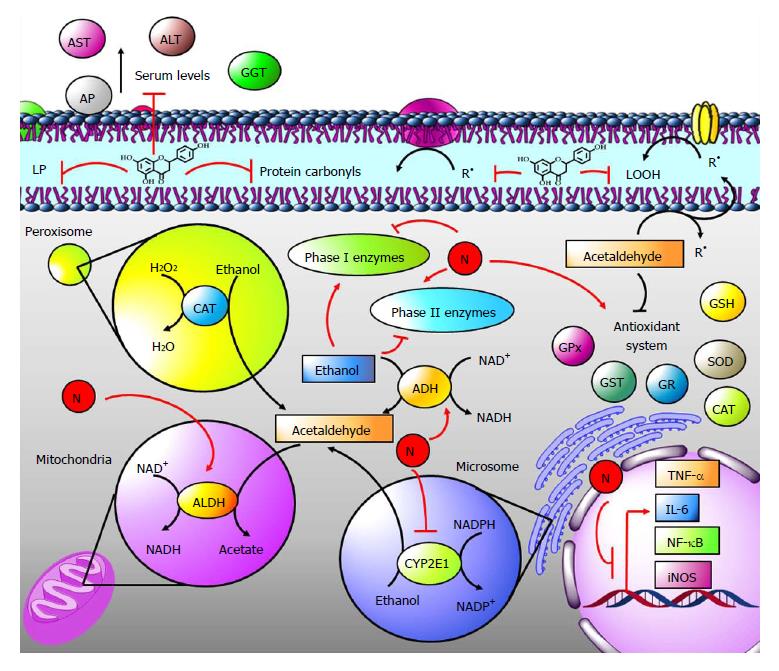Copyright
©The Author(s) 2018.
World J Gastroenterol. Apr 28, 2018; 24(16): 1679-1707
Published online Apr 28, 2018. doi: 10.3748/wjg.v24.i16.1679
Published online Apr 28, 2018. doi: 10.3748/wjg.v24.i16.1679
Figure 5 The role of naringenin in alcohol-induced liver damage.
Alcohol metabolism: In the cytosol, alcohol is converted into acetaldehyde by alcohol dehydrogenase (ADH); it is also formed in microsomes by CYP2E1 and in peroxisomes by catalase (CAT). In mitochondria, acetaldehyde dehydrogenase (ALDH) transforms acetaldehyde to acetate. Ethanol elevates ADH and CYP2E1 activities but decreases ALDH activity, resulting in toxic acetaldehyde accumulation, free radical (R•) formation in the form of lipid hydroperoxides (LOOH) or protein carbonyls and resulting in the elevation of lipid peroxidation (LP). Naringenin (N) increases the activities of all those enzymes, which results in alcohol efficient elimination leading to endogenous antioxidant system restoration, oxidative stress prevention and balance of phase I and phase II xenobiotic metabolism enzymes. Naringenin also prevents increased levels of alkaline phosphatase (AP), aspartate aminotransferase (AST), alanine aminotransaminase (ALT), and γ-glutamyl transferase (GGT) as well as inflammation during alcohol-mediated liver damage.
- Citation: Hernández-Aquino E, Muriel P. Beneficial effects of naringenin in liver diseases: Molecular mechanisms. World J Gastroenterol 2018; 24(16): 1679-1707
- URL: https://www.wjgnet.com/1007-9327/full/v24/i16/1679.htm
- DOI: https://dx.doi.org/10.3748/wjg.v24.i16.1679









